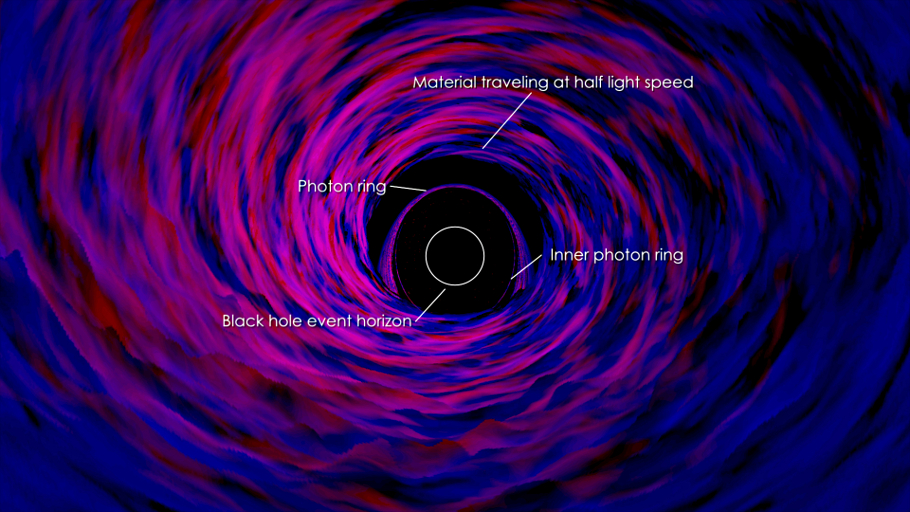
 Credit: NASA's Goddard Space Flight Center
Credit: NASA's Goddard Space Flight Center
A Particularly Hard Problem
Fireworks happen when material approaches too close to a black hole. The extreme space-time distortion near the black hole produces a steep gravitational well; material that does not leave the well alone falls swiftly down, through the event horizon of the black hole never again to return to our Universe. This is a violent process; in their mad rush, atoms bump into other atoms, jostling at near light speed. Because everything spins, stuff does not fall straight down, but spirals around the region outside the black hole, forming a thin accretion disk heated to incredible temperatures by gas friction. Black holes have been observed to emit X-rays, indicating the presence of material at millions of degrees; but they also emit hard X-rays characteristic of temperatures of billions of degrees. A new computer simulation, shown above, has helped shed light on the nature of the hard X-ray light generated by the disk of accreting material. The details of this simulation reveal the contorted paths that radiation takes when moving past the black hole; the turbulent interactions of matter and magnetic fields; and the violent collisions between electrons and photons which re-direct and increase the energy of the transmitted radiation.
Published: July 1, 2013
<
HEA Dictionary ● Archive
● Search HEAPOW
● Other Languages
● HEAPOW on Facebook
● Download all Images
● Education ● HEAD
>

Each week the HEASARC
brings you new, exciting and beautiful images from X-ray and Gamma ray
astronomy. Check back each week and be sure to check out the HEAPOW archive!
Page Author: Dr. Michael F. Corcoran
Last modified Monday, 26-Feb-2024 17:20:23 EST


